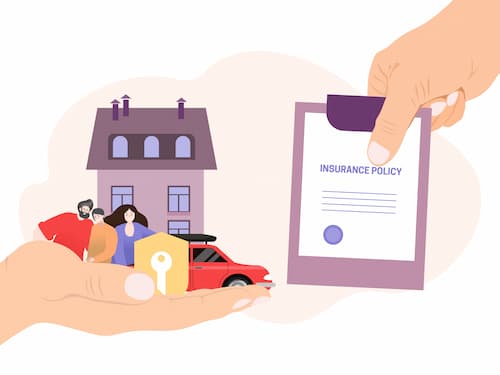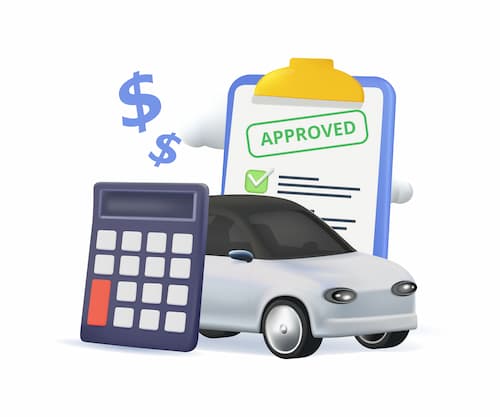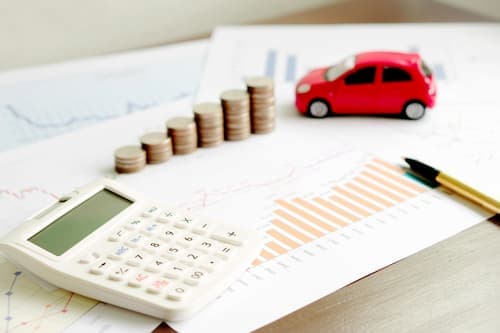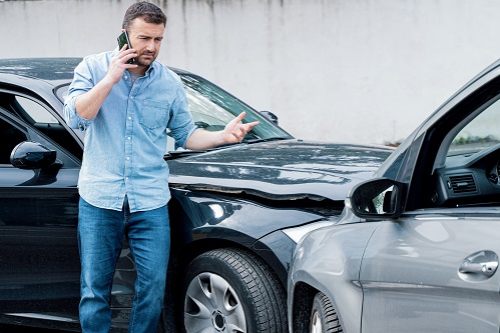What is auto insurance gap coverage?
Gap coverage protects you when your car is totaled or stolen, and you owe more on the car loan than the vehicle is worth. Such situations likely are more common than you think.
For example, when you purchase a new car, it starts to depreciate in value the moment you drive it off the dealer lot. A car typically loses 20% of its value within the first year, according to the Insurance Information Institute.
This depreciationDepreciation is the decrease in your car's value over time due to wear and tear, age and mileage. Depreciation is used to determine the actual cash value of a vehicle in the event of a total loss. poses a big risk to a car owner if the vehicle is destroyed. Typically, if a car is totaled -- or stolen -- the insurance company will only pay the claimAn insurance claim is a request you make to your insurance company for coverage after your car is damaged or you have an accident. You can file a claim online, by phone, or in writing. up to the car's current market value, which takes into account the depreciation. That means you might receive a check for less than the amount you owe on the loan.
Gap insurance "bridges the gap" between the car's market value and what you owe on your loan. This keeps you from writing a big check to cover the difference that results in the gap.
Gap insurance vs full coverage: What's the difference?
Gap insurance should not be confused with full coverage auto insurance. The latter sounds like it would cover the entire car – and in a sense, it does. If you have full coverage, just about anything that can happen to the car is covered, from an accident that damages your car to hailstorm damage. Full coverage also covers you for damage you do to other vehicles and to people and their property -- up to your limits once you've met your deductibleThe deductible is the amount you pay out of pocket for a covered loss when you file a claim..
But full coverage does not cover the gap between your car's market value and what you owe on the loan.
"If you have a covered claim, your collision coverage or comprehensive coverage would help pay for your totaled or stolen vehicle up to its depreciated value," Worters says.
To make sure you will not have to pay the difference between the check you receive from your insurer and the amount you owe on the loan, you need gap coverage. This is a standalone form of coverage that is not part of the typical full-coverage auto policy.
"Gap insurance is meant to be used in conjunction with collision coverageCollision coverage helps pay for repairs or replacement of your car if it's damaged in an accident, regardless of who is at fault and is subject to a deductible. or comprehensive coverage," Worters says.
Do you need gap insurance if you have full coverage insurance?
You might still need gap insurance even if you have full coverage. Full coverage includes collision and comprehensive insurance, but it doesn't cover the difference between what you owe on your car loan and the car's actual value if it's totaled. Gap insurance covers that difference. This is especially useful if you have a large loan balance or your car depreciates quickly.
How much does gap insurance cost?
The cost of gap insurance differs from insurer to insurer. Just as with any auto insurance coverage, it pays to shop around to try to find the best deal.
Gap insurance typically costs somewhere between $20 to $60 a year, making it a real bargain. As a general rule, you will pay 5% to 6% of your comprehensive and collision coverage costs for gap insurance.
However, you likely will only get these low rates if you purchase your policy from a car insurance company. If you purchase gap coverage through a lender or dealership, you might pay substantially more.
In fact, reports suggest that some dealerships mark up the cost of gap insurance by 300%.
When do you need gap insurance?
Whether or not you need gap insurance depends on your tolerance for risk and your financial circumstances.
"Most vehicles' value depreciates about 20% in the first year of ownership, so it's something to consider," Worters says.
There are many common situations in which gap insurance is worth considering. According to the Insurance Information Institute, they include when you:
- Make less than a 20% down payment and or finance a car for 60 months or longer
- Lease a vehicle
- Purchase a vehicle that depreciates quickly
- Rollover negative equity from an old car loan into the new loan
In addition, there may be times when your lender insists that you purchase this coverage. For example, if you lease a vehicle, you most certainly will be required to purchase gap insurance.
FAQ: Gap insurance and full coverage
Should I get gap insurance on a used car?
If you are looking to purchase gap insurance on a used car, you might be out of luck.
"This type of coverage is only available if you're the original loan or leaseholder on a new vehicle," Worters says.
However, your insurer may offer other ways to lower your risk of being stuck having to write a big check if your used car is stolen or totaled. Talk to your insurance agent to learn more.
Is gap insurance necessary?
Gap insurance is necessary if you do not have the funds to pay off what would remain on your car loan if your vehicle was totaled or stolen and the insurer wrote a check for the car's depreciated amount.
It is also possible that your lender will require to you to purchase gap coverage.
If you plan to purchase gap insurance, remember that it pays to shop around to get the best price.
"Gap insurance isn't just sold at car dealerships," Worters says. "Some insurers offer gap insurance as part of a car insurance policy."
How can I buy gap insurance?
There is a good chance that the dealership where you purchased the car will try to sell you gap insurance. But this often is expensive compared to what you can get from your car insurance company.
So, it is best to talk to your insurer about what it offers for gap insurance before you purchase a car. That way, you will get a sense of how much the coverage costs and can make sure the coverage is in place when you purchase the vehicle.
Does gap insurance give me money for a new car?
No, gap insurance will not pay for a new car. Gap insurance exists to cover the amount of money you owe on your car loan if your car is stolen or totaled, and your insurer writes you a check that is less than what you owe on the car loan.
Are there things gap insurance doesn't cover?
It's a mistake to expect too much of gap insurance. There are several things it will not cover.
For example, if you cannot make your car payments because of a sudden financial hardship, don't expect gap insurance to help.
It also will not cover the cost of renting a car if your car is in the shop, and it won't reimburse you for a down payment on a new car. Gap insurance helps you to pay off your car loan when your car is totaled or stolen, and you owe more on the loan than the car is worth.




